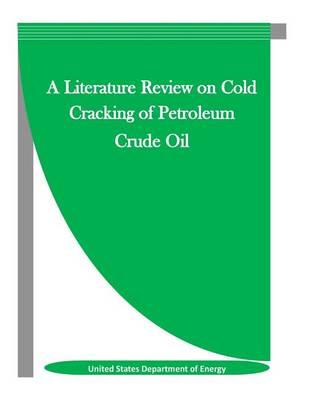Overview
It is obvious from the literature review and private discussions with experts that application of radiation cracking of larger molecules found in crude oils to make (refine) higher value lighter petroleum products is not new. Radiation in different forms (neutrons, electrons, X-rays, Gamma-rays, etc.) can be delivered to petroleum crude oil with energy that is many orders of magnitude in excess of that required to break large hydrocarbon molecules. Some specific observations from the literature include the following: Radiation research applied to petroleum has been pursued by major oil companies, academia and National Laboratories since the 1950's. A wide variety of radiation sources have been explored as high energy sources: emitting neutrons, electrons, gammaray, beta particles and fission products. There are a few energy company U.S. patents that provide detailed results comparing yields from radiation processing of crude oil with conventional refined product yields. None of the patents proved commercial because the energy balance was uncertain. Interest in radiation processing of petroleum languished for about 30 years. Most energy companies and refiners disbanded their nuclear divisions by 1983. Government and academic research on nuclear and hydrocarbons (bond breaking and molecular rearrangement) continued but was limited to model hydrocarbon compounds - clean, well-defined multi-component systems. However, discussion of the use of excess heat from nuclear reactors continued to be of interest to both energy companies and academia. Renewed interest in application of radiation to petroleum processing was generated after the collapse of the former Soviet Union, when many Russian nuclear scientists became idle. Since the 1990's, international efforts, through the International Atomic Energy Agency (IAEA) led to funding a series of proposals from the nuclear scientists in the Republic of Kazakhstan. The use of high energy electrons, generated by a linear electron accelerator, resulted in a series of publications for the Kazakh scientists. Some studies indicate improved efficiency, and highlighted some of the limitations of using high flux electrons to process different types of crude oils found in central Russia and Kazakhstan. This recent Kazakh work has generated renewed interest from a number of U.S. companies that hope to patent the technology and further define the viability of using electron beams as a way of refining crude oil to produce higher value liquid fuels.
Full Product Details
Author: Penny Hill Press Inc ,
United States Department of Energy
Publisher: Createspace Independent Publishing Platform
Imprint: Createspace Independent Publishing Platform
Dimensions:
Width: 21.60cm
, Height: 0.20cm
, Length: 28.00cm
Weight: 0.095kg
ISBN: 9781523389322
ISBN 10: 152338932
Pages: 30
Publication Date: 14 January 2016
Audience:
General/trade
,
General
Format: Paperback
Publisher's Status: Active
Availability: Available To Order

We have confirmation that this item is in stock with the supplier. It will be ordered in for you and dispatched immediately.



